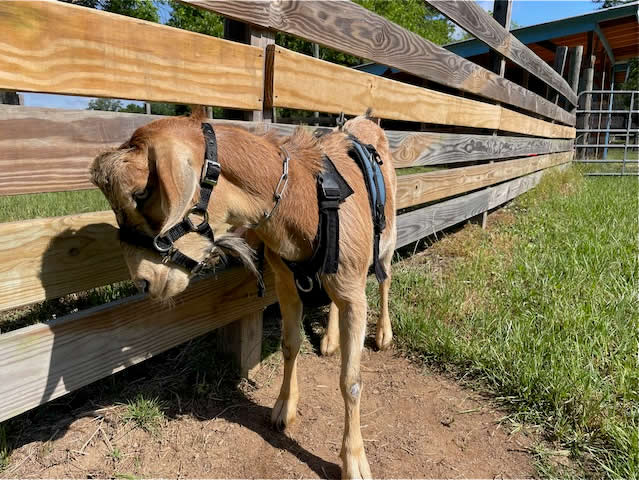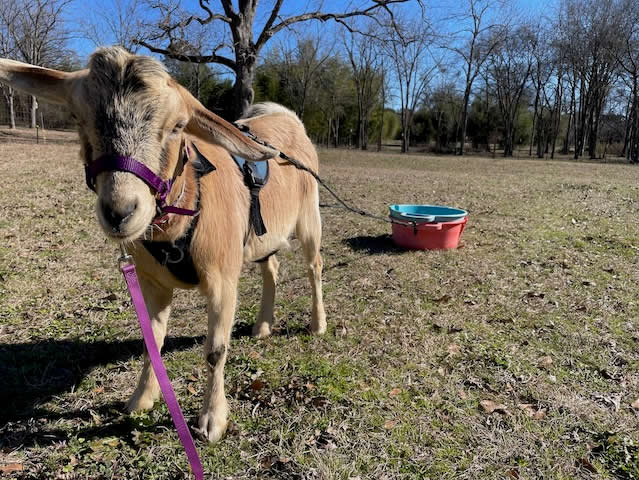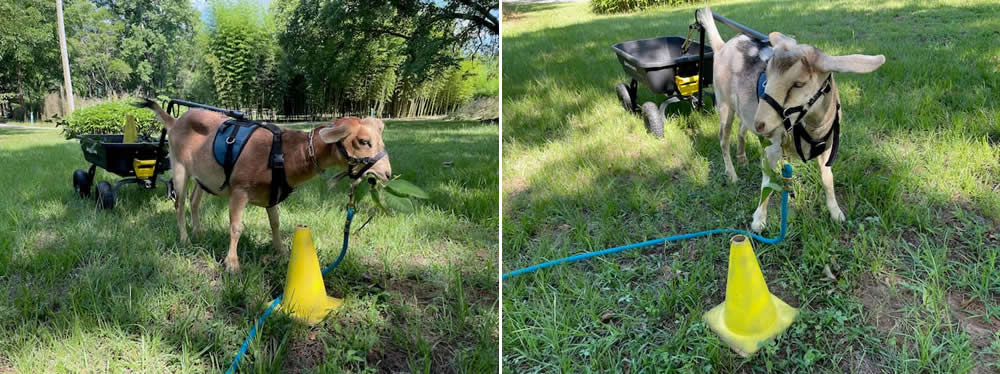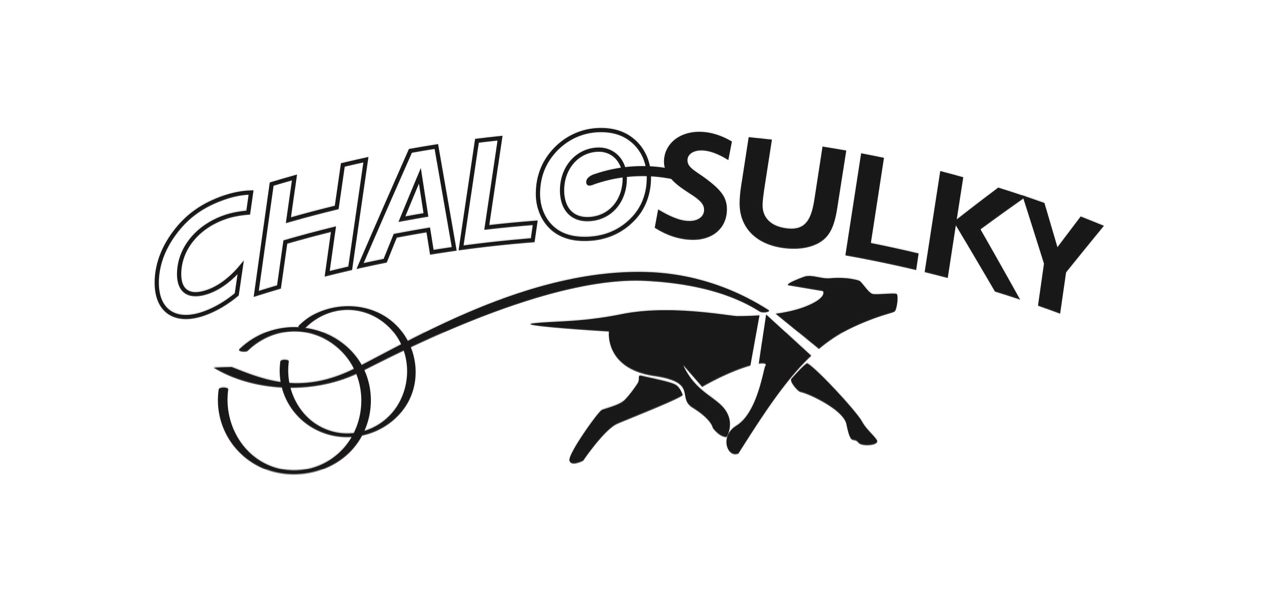Goats can pull wagons where you lead them and they can pull you while you drive them from the wagon. They also can pull you in a sulky.
 I am working with my two year old kinder goats with the goal of driving them. They do not yet work out in front of me so regrettably I am still leading them while they pull the wagon.
I am working with my two year old kinder goats with the goal of driving them. They do not yet work out in front of me so regrettably I am still leading them while they pull the wagon.
They did not have to learn to work between two shafts because I use a dorsal shaft with the wagon. They have not been concerned about the wagon following behind them. My next step will be to add weight to the wagon and to go longer distances with it.
My goats wear the same harnesses worn by my deceased dogs Houzeau, a German shepherd mix and Shaggy, my Labrador poodle mix. The harnesses fit because the neck straps and girth straps adjust. The padded saddle stays the same.
I hitch my goats to the fence so that they are accustomed to tying quietly and without stress. One trains with me and the other waits at the fence.
In the photo, Cooper is wearing Shaggy’s sulky harness. Both Cooper and Shaggy are 24 inches tall. Shaggy was a 65 pound Labradoodle while Cooper is over 100 pounds. The harness adjusts for neck and girth size with buckles on the collar and on the girth straps. The chest pulls against the sternum.
Cooper’s driving halter has rings at the side of the nose piece where the reins would attach. He is hitched to the fence by his collar, not by his halter.
The threaded bolt with its wing nut sticking up from the top of the blue saddle is visible in the photo. The threaded bolt is where the shaft tip of the wagon shaft attaches to the harness. The shaft tip slides down this bolt until it is well seated. The wing nut holds it in place.

In above photo, Cooper is getting ready to pull a “drag”. A drag is anything that allows the goat or dog to learn to accept something dragging behind him. The tow rope has two branches. One branch fastens to the O-ring on the left of the harness and the other fastens to O-ring on the right.
My goats were unmotivated to go for a walk or to see something new. When I took them out, they loved to turn and go back to pasture. I decided to paint some old cones yellow since goats see yellow better than red. I put with treats on the cones to change their attitude toward going outside the pasture, towards going period. I use the yellow cones as motivation to go to new places. They have learned to enjoy looking for and finding the yellow cones. It has been a struggle for them to lose fear of going outside the pasture.
Goat treats are easy to use for training in general and for loading the yellow cones in specific. However, I live adjacent to an abandoned pecan orchard with plenty of suckers on the trunks. The pecan leaves smell great even to my human nose. The goats love them more than the goat treats. I stick the stem of the leaf into the cracks of my decayed old cones and the goats see and smell them and gobble them up.

